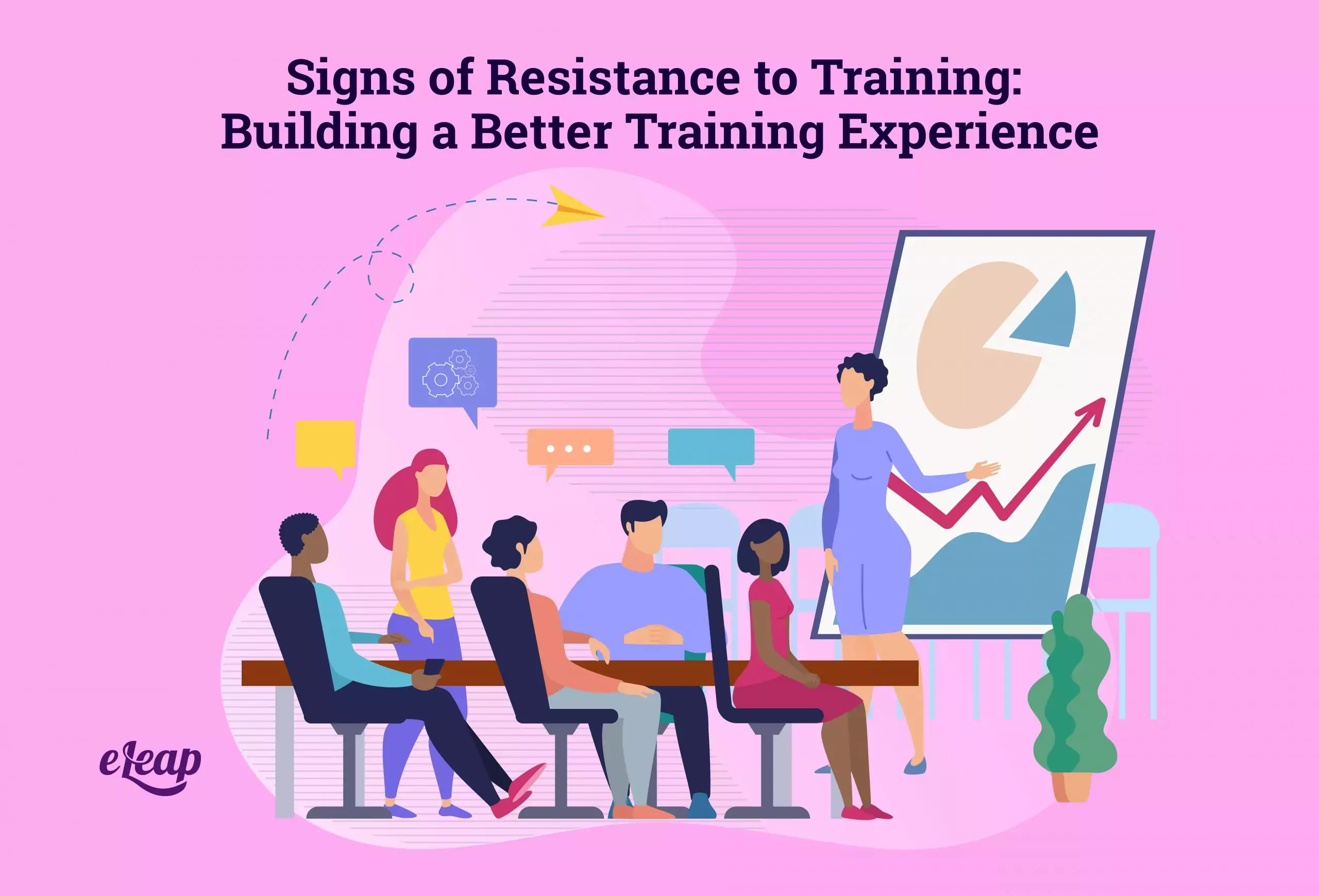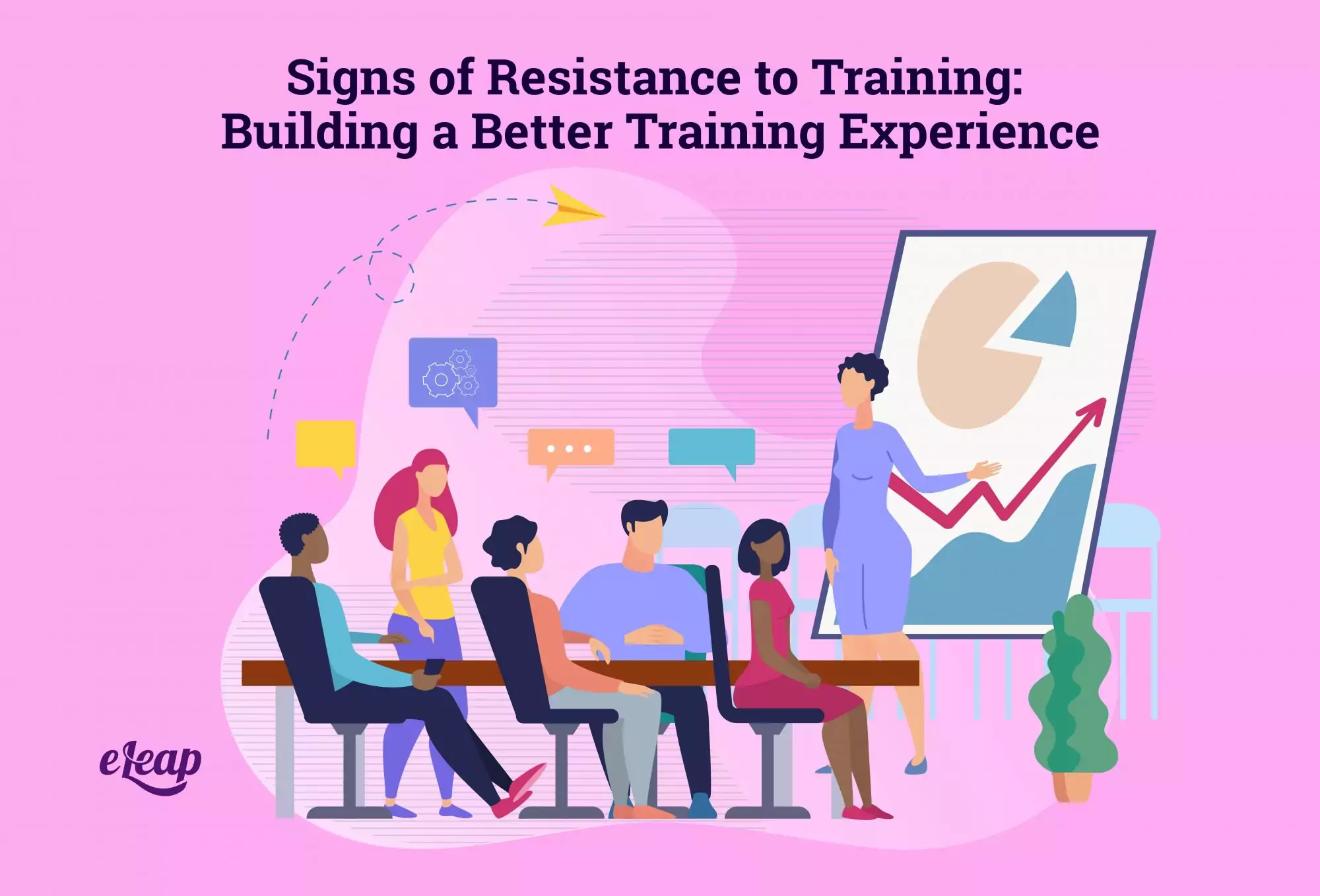Signs of Resistance to Training: Building a Better Training Experience

Resistance to training of employees is common, it’s important to understand what is causing it and organization should take steps to avoid it. Employee training and development are both critical to business success. Without a fully-trained and well-developed workforce, it becomes difficult to compete within your industry, deliver an outstanding customer/client experience, and achieve other critical business goals. Why is it then that so many employees resist learning and development?

The truth is that there are many different reasons for employees to resist training. It’s also important to understand that this resistance can take many different forms. Some are pretty obvious, but others are more subtle. Some can even be insidious, moving from one employee to another like a virus. In this article, we will explore signs of resistance to training so that you can take corrective action as quickly as possible.
Expect that there might be a Resistance to Training
Before we touch on the signs that your team is not on board with the need for training, we should touch on this: expect resistance. Why? Because training is change and change breeds worry, resentment, even anger, and outright fear.
It does not matter that your training initiative is designed to empower and improve your employees. From their perspective, it’s like you are trying to take away their control over some aspects of their professional lives. You know that none of those things are true, but fear of change can make people react in funny ways. Be prepared and expect resistance if you are rolling out a new training program or making significant changes to an existing one.
Critical Signs of Resistance to Training
We must turn our attention to some of the signs that your team is resisting training. In many ways, these signs mirror the signs of resistance to change (because learning initiatives are often perceived as change in action).
Gossip
One of the most obvious signs of resistance is if your team members are gossiping about the L&D initiative. While voicing dissatisfaction with training is allowable, even a positive thing if it fosters growth and improvement, gossip does not achieve those goals. Ultimately, it fosters resentment and can poison minds against training.
However, it can be difficult to pinpoint gossip, particularly if your organization is still mostly remote. The best option is to keep tabs on the pulse of the organization and regularly solicit employee feedback. Make sure you actually implement some employee feedback items, though, or you’ll ultimately drive the wedge deeper, rather than removing it.
Low Adoption
Another good sign that your team is resistant to training is low adoption/enrollment rates. This is where a good learning management system is critical. You should be able to monitor and measure all learners across the system, which gives you a bird’s eye view of who is completing what, how many people have enrolled or started their training, and how many are holding out.
To be clear, there may be many reasons for low adoption/enrollment. For instance, if employees lack time in their daily schedule, they are unlikely to shirk job responsibilities in favor of training. It is up to management to ensure that all employees have sufficient time for training. This also sends the signal that training is a priority and that it’s valued by leadership, which in itself can increase adoption/enrollment.
Limited Advocacy
When employees like something, they talk about it to other employees. That new, high-tech copier? Word got around fast, didn’t it? When the company started sponsoring gym/fitness club memberships, it seemed like everyone knew (and wanted one) immediately. So, why isn’t your L&D initiative getting the same attention? Chances are good that if you’re seeing limited advocacy, it’s for two reasons.
First, there’s resistance to the program. Employees are on the fence, or maybe they don’t really understand the training. Second, leadership may not be doing their job in advocating for the learning and development initiative. Remember that many of your employees’ attitudes actually trickle down from on high. If leadership (particularly the C suite) can get behind the L&D initiative and advocate for it, resistance will lessen.
Ignoring Their Training
Some employees might not be outright ambivalent, but they will do everything in their power to avoid completing any training. This is a sure sign of resistance (passive-aggressive resistance, at that). In most cases, it is caused by a combination of different factors.
First, the resistant employees probably do not have a clear understanding of why the training is necessary. Second, they certainly don’t see the advantages and benefits they stand to reap. However, that resistance may also stem from negative past experiences. If your learning and development content is mired in the 1990s, chances are good you’re facing some stiff resistance just because the experience is unenjoyable, even negative.
To get around this challenge, you need to help your learners see why the training is important, as well as what’s in it for them. It must be perceived as being worth their time and effort. Also, if you haven’t updated your L&D content since the Bush Administration, it’s beyond time to make some serious changes.
Dealing with Resistance to Training
We’ve touched on several ways to deal with resistance to training. However, you will need to look deeply into your organization to determine the causes of resistance. Note that you may face several different sources, too, which means you’ll need to adopt a multi-pronged approach to dealing with it.
In addition to an understanding of the signs of resistance, you also need the right tools to help you handle the situation. A modern learning management system (LMS) like eLeap offers the learning experience that today’s employees expect and deserve. That’s one hurdle you don’t have to overcome on your own – contact us today to learn more about our LMS and how we can help you reduce employee resistance to L&D programs.